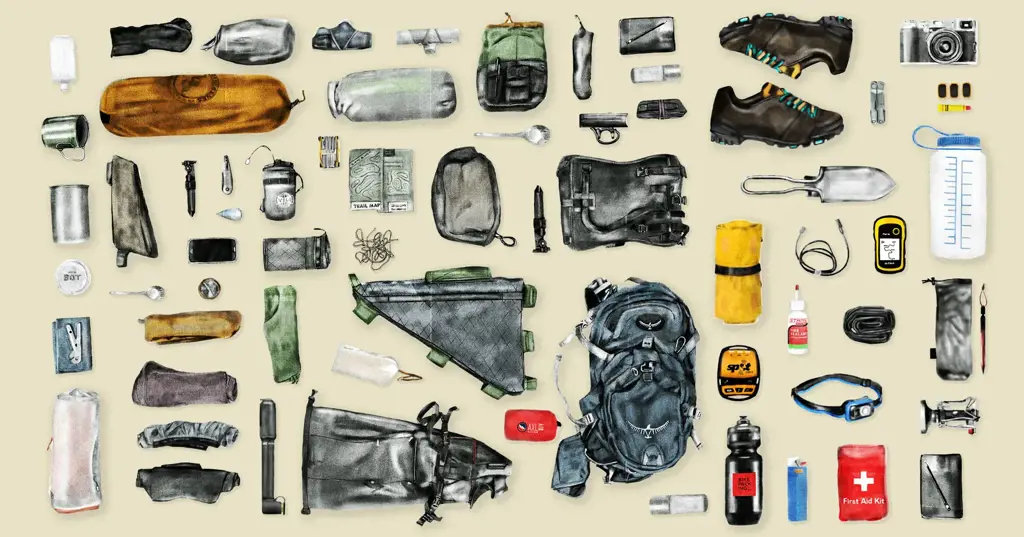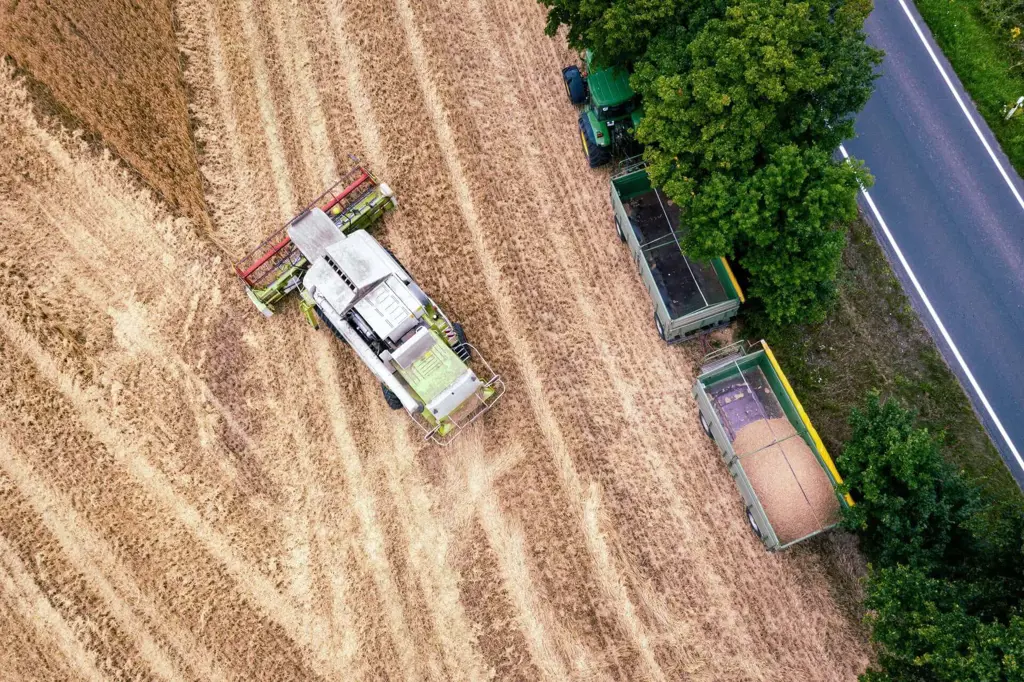
Are you preparing for field work or an outdoor adventure? If so, then you know how important it is to pack the right gear. Whether you're a scientist heading into the wilderness to study plants and animals or an explorer embarking on a thrilling expedition, having the essential gear can make all the difference. In this guide, we'll provide you with valuable packing tips to help ensure your field work is successful. So grab your backpack and get ready to learn how to pack like a pro.
What You'll Learn
- What essentials should I pack for field work?
- How do I determine what clothing to pack for field work?
- Are there any specific tools or equipment that are typically needed for field work?
- What safety gear should I include in my field work packing list?
- Are there any specific items or supplies that are often overlooked when packing for field work?

What essentials should I pack for field work?

Field work is an essential part of many scientific research projects. Whether you are studying wildlife, collecting samples, or conducting surveys, it is important to be well-prepared in order to be productive and successful in the field. In this article, we will discuss the essential items that you should pack for field work.
- Field notebook: A field notebook is crucial for recording data, observations, and other important information. Make sure to choose a waterproof notebook and bring extra pens or pencils. This will help you keep track of your work and ensure that you don't forget any important details.
- Maps and compass: It is important to have accurate maps and a compass to navigate the field site. Familiarize yourself with the area beforehand and bring a GPS device if necessary. Knowing your way around the field site is essential for efficient and safe field work.
- Field equipment: Depending on the nature of your research, you may need to pack specialized field equipment. This could include things like a camera and lenses for photography, binoculars for bird watching, or specific tools for sample collection. It is important to plan ahead and make a checklist of all the necessary equipment for your specific field work.
- Sampling supplies: If you are collecting samples, make sure to pack the necessary supplies. This could include sample bags, vials, gloves, and other protective gear. Additionally, you may need ice packs or coolers to store the samples until you can analyze them in the lab.
- Safety gear: Field work can be unpredictable, so it is important to prioritize safety. Bring appropriate safety gear such as a first aid kit, insect repellent, sunscreen, and a hat. If you are working in remote areas, consider packing a satellite phone or emergency communication device in case of emergencies.
- Food and water: Field work can be physically demanding, so it is important to bring enough food and water to stay hydrated and energized. Pack non-perishable snacks and meals that can be easily prepared in the field. Consider bringing a portable water filter or purification tablets to ensure a safe and clean water source.
- Clothing and footwear: Dressing appropriately for field work is important for comfort and protection. Pack clothing that is appropriate for the weather and activity level. Depending on the terrain, you may need rugged footwear, waterproof boots, or specialized gear such as waders. Don't forget to bring extra socks and layers in case of changing weather conditions.
- Personal items: In addition to the essentials, don't forget personal items such as a hat, sunglasses, insect repellent, and sunscreen. These items will help keep you comfortable and protected from the elements. It is also a good idea to pack extra batteries, charging cables, and a backup power source for any electronic devices you may be using in the field.
- Field guidebooks and reference materials: If you are studying wildlife or plants, it can be helpful to bring field guidebooks and reference materials. These resources can help you identify species, track behavior, and learn more about the ecosystem you are studying.
- Organization and storage: Finally, it is important to have a system to keep your equipment and supplies organized and easily accessible. Consider using waterproof bags or containers to protect your gear from moisture and keep everything in its place.
In conclusion, field work requires careful planning and packing to ensure a successful and productive research project. By following these essential packing guidelines, you will be well-equipped to handle any challenges that may arise in the field. Remember to tailor your packing list to your specific research needs and field environment for the best results.
Essential Items to Pack for a Teenager's Trip to London
You may want to see also

How do I determine what clothing to pack for field work?

Field work often requires specific clothing to ensure comfort, safety, and efficiency. Whether you are conducting research in the wild or working on a construction site, it is crucial to pack the right clothing for the job. Here are the steps to determine what clothing to pack for field work:
Step 1: Understand the Nature of the Field Work
Before deciding what clothing to pack, it is essential to have a clear understanding of the specific field work you will be involved in. Consider the environmental conditions you will encounter, such as temperature, humidity, and precipitation. Additionally, assess the type of physical activities you will be engaged in and the potential hazards present in the field.
Step 2: Research Suitable Clothing Materials
Once you have an understanding of the field work, research the most suitable clothing materials for the given conditions. Look for fabrics that are breathable, moisture-wicking, and quick-drying. Natural fibers like cotton and wool are often preferred for their comfort and insulation properties. Synthetic materials like polyester and nylon can also be useful for their durability and moisture management capabilities.
Step 3: Layering System
Develop a layering system to adapt to changing conditions throughout the day. Start with a base layer that wicks away sweat from the skin and helps maintain body temperature. Mid-layers provide insulation and can be added or removed as needed. Outer layers, such as jackets or raincoats, protect against wind, rain, and extreme temperatures. This layering system allows for flexibility and ensures you stay comfortable in varying weather conditions.
Step 4: Consider Safety and Protection
Field work may involve risks and hazards that require specific protective clothing. Consider wearing a helmet, safety goggles, gloves, and steel-toed boots if necessary. Additionally, if you will be working in areas with ticks or other insect-borne diseases, consider wearing clothing treated with permethrin or applying insect repellent.
Step 5: Comfort and Mobility
Choose clothing that allows for freedom of movement and provides comfort during prolonged periods of physical activity. Opt for clothing with stretchable fabric, articulated knees, and a relaxed fit. Ensure that clothing does not restrict movement or cause chafing, as this can lead to discomfort and potentially impact your performance in the field.
Step 6: Practicality and Durability
Field work can be demanding, so it is crucial to choose clothing that can withstand wear and tear. Select clothing made from durable materials and look for reinforced stitching in high-stress areas. Additionally, consider clothing with ample pockets for storing essential tools, equipment, and personal belongings.
Step 7: Test and Modify
Before embarking on your field work, it is advisable to test your clothing choices in a similar environment. This will give you an opportunity to evaluate their performance and make any necessary modifications. Pay attention to factors like comfort, breathability, and moisture management to ensure you are adequately prepared for the challenges you will face.
In summary, determining what clothing to pack for field work requires careful consideration of the nature of the work, suitable materials, layering systems, safety requirements, comfort and mobility, and practicality. By following these steps and considering the specific demands of your field work, you can ensure that you are adequately dressed for the job at hand.
What to Pack for a September British Isles Cruise
You may want to see also

Are there any specific tools or equipment that are typically needed for field work?

Field work is a crucial component of many scientific and research endeavors, such as ecological studies, geological surveys, or archaeological excavations. These activities often require scientists and researchers to collect data directly from the field. This data can range from observations of natural phenomena to the collection of physical samples for analysis later in the lab. To perform field work successfully, certain tools and equipment are typically needed. Here, we will discuss some of the most common tools and equipment used in fieldwork.
- GPS device: A Global Positioning System (GPS) device is essential for documenting the exact location of field sites with high precision. It allows researchers to accurately mark and record the coordinates of specific points of interest.
- Field notebook: A field notebook is used to record detailed observations, data, and measurements made during fieldwork. Researchers can document their findings, draw diagrams, and take notes about the environment or any significant events that may influence their study.
- Measuring tools: Depending on the field of study, various measuring tools are necessary. Examples include a measuring tape to measure distances, a ruler or caliper to measure dimensions of objects, or a pH meter to measure the acidity or alkalinity of soil or water samples.
- Sampling equipment: Collecting samples is often an essential aspect of fieldwork. Researchers may need equipment such as soil corers, water samplers, or sediment sieves to collect representative samples for later analysis in the lab.
- Field markers: Field markers are used to denote specific locations or mark boundaries. Flags, stakes, or colored tapes can be used to mark study plots, rebar can be used to mark the corners of excavation sites, and numbered or lettered markers can be used to label sample bags or containers.
- Weather monitoring instruments: In some cases, the weather conditions can heavily impact the outcome of fieldwork. Weather monitoring instruments such as thermometers, anemometers, or rain gauges can provide valuable information on temperature, wind speed, and percipitation, and help researchers understand any potential weather patterns that may influence their study.
- Safety equipment: Safety should always be a top priority during fieldwork. It is essential to carry appropriate safety equipment such as gloves, goggles, hard hats, or safety vests, depending on the specific hazards involved in a particular fieldwork setting.
- Field clothing and gear: Fieldwork can be physically demanding and often takes place in challenging environments. It is important to have appropriate clothing and gear, including sturdy footwear, waterproof jackets, hats, sunscreen, insect repellent, and backpacks to carry all necessary equipment.
It is worth noting that the specific tools and equipment required for fieldwork may vary depending on the nature of the study and the location. Researchers should carefully consider the objectives and requirements of their study before determining the necessary tools and equipment for their fieldwork. Furthermore, it is crucial to ensure that all equipment is in good working condition and properly maintained to ensure accurate and reliable data collection in the field.
Essentials for Packing Your Hospital Bag After a C-Section
You may want to see also

What safety gear should I include in my field work packing list?

When heading out for field work, it is essential to prioritize safety and ensure that you have the necessary gear to protect yourself. Field work can often involve working in hazardous environments or dealing with unpredictable situations, so having the right safety equipment is crucial. Here are some essential items that should be included in your field work packing list:
Personal Protective Equipment (PPE):
- Hard Hat: A hard hat can protect your head from falling objects or overhead hazards.
- Safety Glasses or Goggles: These can shield your eyes from potentially harmful substances, dust, or flying debris.
- Ear Protection: In noisy environments, earplugs or earmuffs can help prevent hearing damage.
- High-visibility Clothing: Wearing bright, reflective clothing can make you more visible and reduce the risk of accidents, especially if working near moving vehicles or in low-light conditions.
- Gloves: Depending on the nature of your field work, you may need gloves to protect your hands from sharp objects, chemicals, or extreme temperatures.
First Aid Kit:
A well-stocked first aid kit is essential in case of injuries or medical emergencies. It should include bandages, antiseptics, gloves, pain relievers, and any necessary medication specific to your health needs.
Communication Devices:
- Cell Phone: Having a fully charged cell phone with good network coverage can keep you connected with safety personnel or emergency services in case of an accident or emergency situation.
- Two-way Radio: In areas with poor cell phone reception, a two-way radio can be an effective communication tool.
Navigation Tools:
- Map and Compass: If you are working in remote areas, having reliable navigation tools can help you find your way and prevent getting lost.
- GPS Device: A GPS device can provide precise location information, making it easier to track your position and communicate it to others if needed.
Safety Harness and Fall Protection:
If your field work involves working at heights, such as on a ladder or in a tree, a safety harness and fall protection equipment are essential. These can prevent serious injuries in case of a fall.
Sun Protection:
- Sunscreen: Protecting your skin from harmful UV rays is crucial, especially if you are working outdoors for long periods. Choose a broad-spectrum sunscreen with high SPF and reapply it regularly.
- Hat and Sunglasses: Wearing a wide-brimmed hat and sunglasses can provide additional protection for your face, eyes, and neck.
Emergency Supplies:
- Emergency Blanket: A lightweight emergency blanket can provide warmth and insulation in case you are stranded or injured in a remote location.
- Whistle: A whistle can be used as a distress signal to attract attention and call for help.
- Flashlight: A dependable flashlight is essential for navigating in low-light conditions or during emergencies.
- Multi-tool: Having a multi-tool with various built-in functions, such as a knife, pliers, or screwdriver, can be handy in unforeseen situations.
Remember, the specific safety gear you need may vary depending on the nature of your field work and the potential hazards involved. Always assess the risks beforehand and consult any safety guidelines or regulations provided by your organization or field work supervisor. Additionally, ensure that you are adequately trained in using the safety equipment and that it is well-maintained and in good working condition before heading out into the field. Your safety and the safety of those around you should always be a top priority.
Essential Packing Guide for UEA Accommodation
You may want to see also

Are there any specific items or supplies that are often overlooked when packing for field work?

When packing for field work, there are often specific items or supplies that can be easily overlooked. These items are essential for the success and efficiency of the field work, but may not always be the first things that come to mind when packing. In this article, we will discuss some of these commonly overlooked items and supplies, and why they are important to include in your field work packing list.
- Extra Batteries: Field work often involves the use of electronic devices such as GPS units, cameras, and other data collection tools. It is important to pack extra batteries for these devices to ensure that they do not run out of power in the field. Running out of batteries can be a major setback, as it may mean missing out on important data or having to spend extra time and effort finding replacements.
- Field Notebooks and Pens: It is easy to assume that you can rely solely on electronic devices for taking notes and recording data. However, it is always a good idea to have a backup method. Field notebooks and pens are reliable and do not require batteries or electricity. They are also useful for sketching or drawing diagrams, which may be difficult to do on electronic devices.
- First Aid Kit: Safety should always be a top priority during field work. Having a well-stocked first aid kit is essential in case of any injuries or accidents that may occur in the field. The first aid kit should include items such as bandages, antiseptic wipes, pain relievers, and any necessary prescription medications. It is important to regularly check and restock the first aid kit to ensure that it is always ready for use.
- Field Clothing: Field work often involves spending long hours outdoors in various weather conditions. It is essential to pack appropriate field clothing to ensure comfort and protection. This may include items such as sturdy boots, rain gear, sun hats, and insect repellent. It is important to research the specific field work location and climate in order to pack the appropriate clothing for the conditions you will be facing.
- Field Guides and Reference Materials: Depending on the nature of the field work, it may be helpful to pack field guides or reference materials specific to the research or work being conducted. These resources can be handy for identifying plants, animals, or geological features, and can serve as a valuable reference tool in the field.
- Field Equipment Maintenance Kit: Field equipment such as cameras, GPS units, and sampling tools often require regular maintenance. It is important to pack a maintenance kit that includes items such as cleaning solutions, brushes, and spare parts. Regular maintenance can help prolong the life of the equipment and ensure that it functions properly throughout the field work.
- Snacks and Water: Field work can be physically demanding, and it is important to stay properly hydrated and fueled. Packing snacks and water to have on hand can help prevent dehydration and keep energy levels up during long days in the field. It is also a good idea to pack easy-to-eat and non-perishable snacks that can be eaten on the go.
In conclusion, packing for field work requires careful consideration of the specific items and supplies that are often overlooked. By including items such as extra batteries, field notebooks, a first aid kit, appropriate field clothing, field guides, a maintenance kit, and snacks and water, you can ensure that you are well-prepared for a successful and efficient field work experience.
The Ultimate Guide for Packing Essentials for a Vacation Plane Journey
You may want to see also
Frequently asked questions
When packing for field work, it's important to bring essentials such as a sturdy backpack, comfortable clothing that can withstand various weather conditions, durable and supportive footwear, a hat or cap for sun protection, sunscreen, insect repellent, a refillable water bottle, and a first aid kit.
The specific equipment you should bring for field work will depend on the nature of your research or project. However, some common equipment includes a notebook and pen for taking notes, a camera or smartphone for documenting findings, a GPS device or compass for navigation, field guides or identification keys for species identification, and any specialized equipment specific to your research, such as soil sampling tools or water quality testing kits.
When packing clothing for field work, it's important to prioritize comfort and functionality. Choose clothing that is made of quick-drying and moisture-wicking materials, which will help keep you cool and dry in hot and humid environments. Layering is also important, as weather conditions can change throughout the day. Additionally, pack clothes that provide sun protection, such as long-sleeved shirts and long pants, and consider bringing a lightweight rain jacket or poncho for wet weather.
Safety should be a top priority when packing for field work. Ensure you have adequate personal protective equipment (PPE) for the specific hazards you may encounter, such as safety glasses, gloves, or a hard hat. If you are doing field work in remote or hazardous locations, it may be necessary to pack emergency communication devices, such as a satellite phone or a personal locator beacon (PLB), as well as any necessary survival gear, such as a whistle, emergency blanket, or portable water filter.
To maximize space and weight when packing for field work, consider the following tips: choose lightweight and compact versions of your equipment and gear whenever possible, roll clothing instead of folding to save space, use compression sacks or packing cubes to organize and compress your clothing and gear, and prioritize multipurpose items to eliminate unnecessary duplicates. Additionally, consider the duration of your field work and plan to do laundry or resupply if needed to reduce the amount of clothing and gear you need to pack.







